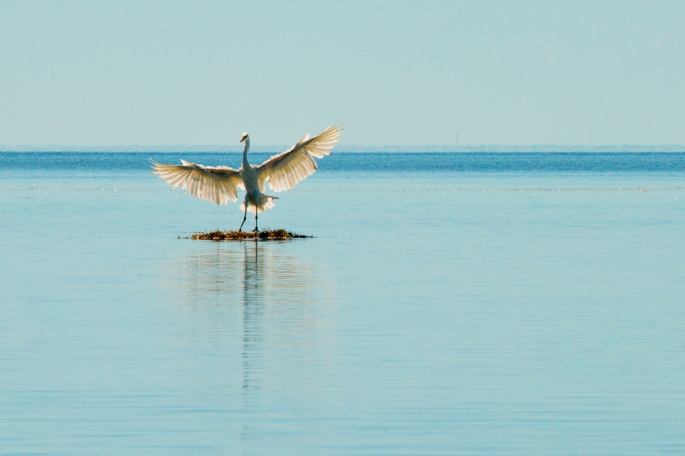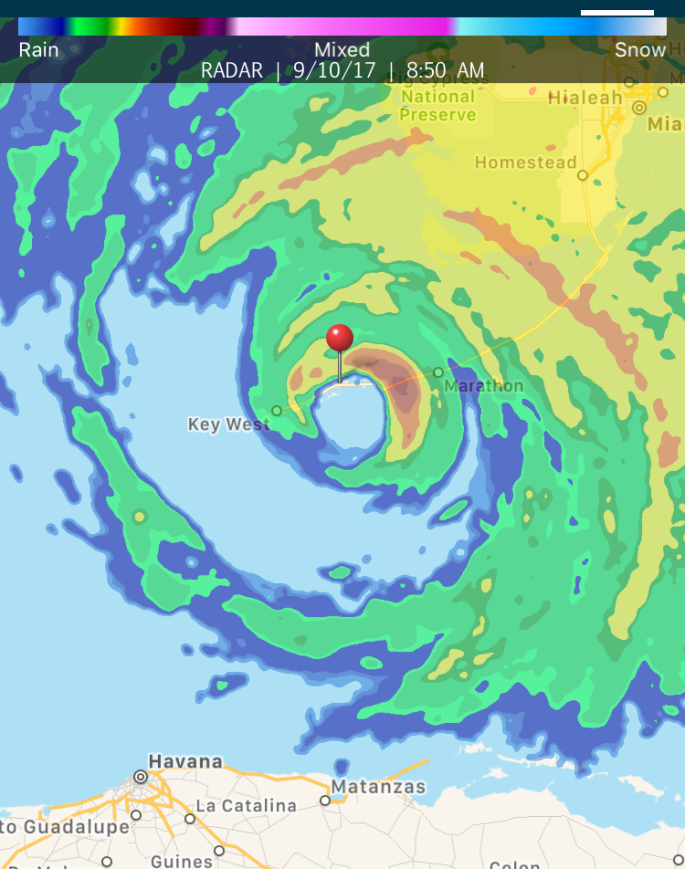One of our stories just came out in the Summer issue of National Parks Magazine. Hats off to the publishers, the folks at the National Parks Conservation Association who work tirelessly to preserve our open spaces — as well as to the hundreds of thousands of refugees and immigrants who have risked and are currently risking their lives to try to fill basic human needs and find a safe place to live with their loved ones. Read on to find out secrets about Dry Tortugas National Park as well.
Tag: everglades
Hurricane Irma, Tales from the Lower Keys
Photo: Radar of Hurricane Irma making landfall over the Florida Keys. The red pin is our house on Cudjoe Key. Phone screenshot was taken from our evacuation site in Sebring.
The trip odometer read 6,965 miles when we pulled into our driveway on Cudjoe Key. It was Sunday. We had just returned from an epic road trip that included traveling to Wyoming to witness the solar eclipse. Three days later, we pulled out of our driveway as evacuees. We never imagined that our tiny Key would soon be infamous as the epicenter of one of the most powerful storms on record.
The eye made landfall over our house, and 12 hours later hurricane Irma centered her eye over our evacuation site in Sebring, Florida. The aftermath is an experience to behold: the largest evacuation in our country’s history, millions without power, a swath of destruction, and a coming together of kindness and resilience.
We were fortunate to be able to return just a few days after the hurricane had passed, reporting for local media. Over the coming days, we will post some of these experiences, and the tales of those we meet along the way, as well as recovery resources for those living in the Keys. If you’re interested, please follow the blog and feel free to contact us: karuna@quixotictravelguides.com and steve@quixotictravelguides.com.
Great White Heron
Sept. 10, 2016: The great white heron is a homebody. Out of the whole world, they choose to only live in the Keys and parts of the Everglades. Nearing 5 feet tall with 7-foot wingspans, they are the largest of all herons. There is still some scientific debate as to whether they are just a color morph of the great blue heron, but many are leaning toward them being a separate species, in part because they are larger than the blues, don’t share their propensity to migrate thousands of miles, and as John James Audubon pointed out in the 1830s, have decidedly more pointed tempers, at least  when forced into captivity. They can be distinguished from great white egrets by their yellow legs (egrets’ are black) and seen in the Keys wading and fishing near shallow-water mangroves, and especially in their namesake Great White Heron National Wildlife Refuge.
when forced into captivity. They can be distinguished from great white egrets by their yellow legs (egrets’ are black) and seen in the Keys wading and fishing near shallow-water mangroves, and especially in their namesake Great White Heron National Wildlife Refuge.
Blog post title
Sept. 17, 2016: Beautiful yet irritating, moon jellyfish live here year-round but increase in numbers as winds and currents usher them near the reefs and shore from late August to October. The part that stings are their tentacles, which are short, fortunately, and to most only leave a red, itchy-stingy splotch for a few hours. However inconvenient they may be to fall snorkeling, they are a primary food for the critically endangered leatherback and other sea turtles, sunfish and other fish including tuna. They are pretty chill creatures, literally just going where the flow takes them, but are a bit immodest — the clover-pattern in the center are actually its gonads. We saw this guy in the Key West National Wildlife Refuge west of town.



